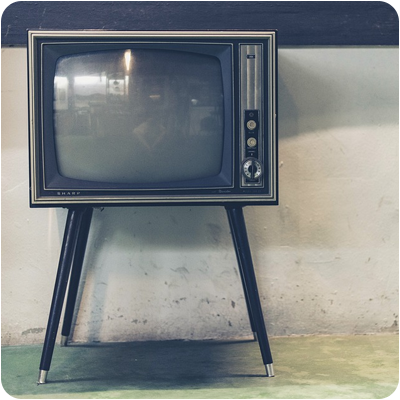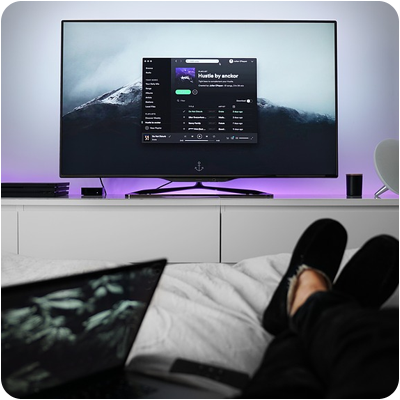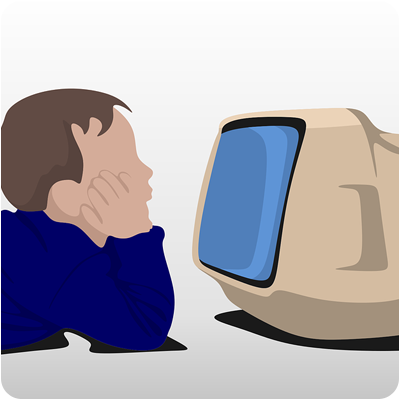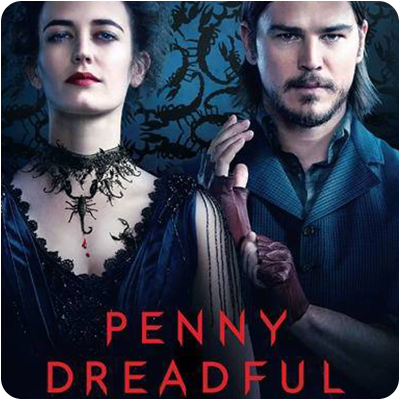Het arrangement What's on TV? - hv3 is gemaakt met Wikiwijs van Kennisnet. Wikiwijs is hét onderwijsplatform waar je leermiddelen zoekt, maakt en deelt.
- Auteur
- Laatst gewijzigd
- 11-05-2025 19:48:17
- Licentie
-
Dit lesmateriaal is gepubliceerd onder de Creative Commons Naamsvermelding-GelijkDelen 4.0 Internationale licentie. Dit houdt in dat je onder de voorwaarde van naamsvermelding en publicatie onder dezelfde licentie vrij bent om:
- het werk te delen - te kopiëren, te verspreiden en door te geven via elk medium of bestandsformaat
- het werk te bewerken - te remixen, te veranderen en afgeleide werken te maken
- voor alle doeleinden, inclusief commerciële doeleinden.
Meer informatie over de CC Naamsvermelding-GelijkDelen 4.0 Internationale licentie.
Aanvullende informatie over dit lesmateriaal
Van dit lesmateriaal is de volgende aanvullende informatie beschikbaar:
- Toelichting
- Deze les valt onder de arrangeerbare leerlijn van de Stercollectie voor Engels voor havo en vwo, leerjaar 3. Dit is thema 7 'Television'. Het onderwerp van deze les is: What's on tv? Deze les staat in het teken van (reviews van) televisieprogramma's, de tv-gids, reviews en jongeren en televisie. De onregelmatige werkwoorden in deze les zijn: to speak, to spend en to spoil. In de grammaticaopdracht wordt de 'Adverb position' behandeld.
- Leerniveau
- HAVO 3; VWO 3;
- Leerinhoud en doelen
- Engels;
- Eindgebruiker
- leerling/student
- Moeilijkheidsgraad
- gemiddeld
- Studiebelasting
- 1 uur 40 minuten
- Trefwoorden
- adverb position, arrangeerbaar, engels, hv3, jongeren en televisie, review, stercollectie, televisieprogramma's, tv-gids, what's on tv?
Gebruikte Wikiwijs Arrangementen
VO-content Engels. (z.d.).
BLOKKEN TEMPLATE - hv123

 The subject of this period is television programmes.
The subject of this period is television programmes.










 “I am a gardener. I literally am: A Gardner, it’s my name,” says Alan Gardner, possibly not for the first time. He’s also The Autistic Gardener, a new show on Channel 4. I wonder if they thought of calling it The Auticulturist, and then decided against it, probably wisely. Alan’s doing a makeover, on a disaster of a garden in Derbyshire, with the help of Charles, Thomas, Philip, Victoria, James and Victoria, all of whom are also on the spectrum.
“I am a gardener. I literally am: A Gardner, it’s my name,” says Alan Gardner, possibly not for the first time. He’s also The Autistic Gardener, a new show on Channel 4. I wonder if they thought of calling it The Auticulturist, and then decided against it, probably wisely. Alan’s doing a makeover, on a disaster of a garden in Derbyshire, with the help of Charles, Thomas, Philip, Victoria, James and Victoria, all of whom are also on the spectrum. Eva Green was haunted by malevolent spirits, Josh Hartnett fought off a gaggle of pointy teethed women, Harry Treadaway shouted ‘Pull. The. Lever. Now!’, and Timothy Dalton chewed every piece of scenery in sight. Penny Dreadful is back and it’s still gloriously silly, high camp fun, and easily the most outrageously entertaining guff currently being aired. The only problem is that my opening sentence could easily describe the entire first series or the opener to series two. We’re back alright, but on very familiar ground.
Eva Green was haunted by malevolent spirits, Josh Hartnett fought off a gaggle of pointy teethed women, Harry Treadaway shouted ‘Pull. The. Lever. Now!’, and Timothy Dalton chewed every piece of scenery in sight. Penny Dreadful is back and it’s still gloriously silly, high camp fun, and easily the most outrageously entertaining guff currently being aired. The only problem is that my opening sentence could easily describe the entire first series or the opener to series two. We’re back alright, but on very familiar ground.